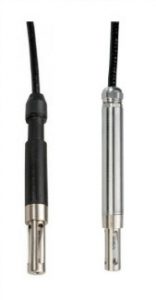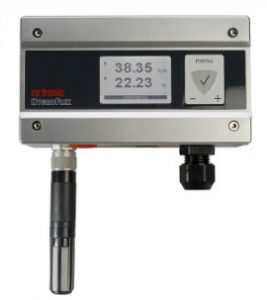Pasta in General
Pasta is a type of noodle and is a staple food of traditional Italian cuisine, with the first reference dating to 1154. The word “Pasta” is also commonly used to refer to the variety of pasta dishes. Typically pasta is made from unleavened dough of a durum wheat flour mixed with water and formed into sheets or various shapes, then cooked and served in any number of dishes. It can be made with flour from other cereals or grains, and eggs may be used instead of water. Pastas may be divided into two broad categories, dried (pasta secca) and fresh (pasta fresca).
Since the 1600s pasta manufacturers established themselves across the coast of San Remo. The extrusion press produced large amounts of uniform pastas. The consistency of shapes and texture of the pasta manufactured by the extrusion press is believed to be superior to handmade pasta. This technology has spread to other areas including Genoa, Apulia, Brindisi, Bari, and Tuscany. By 1867, Buitoni Company in upper Tiber Valley became one of the most successful and well known pasta manufacturers in the world.
Most dried pasta is commercially produced via an extrusion process. Fresh pasta was traditionally produced by hand, sometimes with the aid of simple machines, but today many varieties of fresh p
asta are also commercially produced by large scale machines, and the products are broadly available in
supermarkets.
Dried Pasta
Dried pasta can also be defined as factory-made pasta because it is usually produced in large amounts that require large machines with superior processing capabilities to manufacture. Dried pasta is mainly shipped over to further locations and has a longer shelf life compared to fresh pasta. The recipe for the ingredients required to make dried pasta include semolina flour and water. Eggs can be added for flavor and richness, but are not needed. In contrast to fresh pasta, dried pasta needs to be dried at a low temperature for several days to evaporate all the moisture allowing it to be stored for a longer period.
Once it is cooked, the dried pasta will usually increase in size by double of its original proportion. Therefore, approximately 0.5 kg of dried pasta serves up to four people. The recipe for the finest dried pasta is mixing golden semolina flour, ground from durum wheat, with water. Good quality dried pasta is identified by its slight rough surface and compact body that helps maintain its firmness in cooking, since it swells considerably in size when cooked.
The Great Advantage of Dry Pasta
In normal ambient conditions dried pasta keeps a long time without needing any preservatives or particular storage requirements. Moisture and insects are the main concerns, although good packaging and a suitable storage conditions are sufficient to ward of these dangers. The essential prerequisite is, however, for the pasta not only to be dry, but also to have been dried properly!
Why the Need to Measure Humidity?
After processing the dough, pasta normally has a moisture content of approximately 30% (depending on the type of dough and the shapes made). It is considered dry when its internal moisture content is equal to or less than 12.5% and balanced with the surrounding environment. This means that, to keep well, besides being dry, pasta needs to be “stable”: in other words, within certain environmental climatic limits (air temperature and humidity) it must keep its remaining internal moisture content uniform.
After leaving the dough and with a moisture content of approximately 30%, pasta is in a “plastic state”. This condition has specific physical properties: a body in a plastic state can deform under the action of external forces without any particular tension forming inside it and, moreover, it can permanently keep the shape acquired as a result of these forces.
When, proceeding with drying, the product’s moisture content falls further (22-18%), the state of the pasta changes from plastic to elastic. In this new state the product’s behavior is totally different: an elastic body subjected to stress deforms, but tends to recover its original shape as soon as the stress stops. Besides causing deformation, stresses can then bring about tension inside the product. If the tension comes within the product’s specific limit of elasticity, it can
be absorbed precisely by its own elasticity; whereas, if it exceeds this limit it will inevitably be damaged.
This is exactly what happens when drying pasta: when the moisture inside the product falls to approximately 20% its physical state passes from being “plastic” to “elastic”.
The most significant physical states for pasta drying technology are the moisture and temperature of the air and the humidity and temperature of the product. The laws governing the phenomenon of these physical states must therefore be applied for all drying operations. Very briefly, drying pasta means modulating and appropriately controlling the evaporation of water from the product, using heat and ventilation.
In drying pasta, ventilation plays a fundamental role since, besides removing the water given off by the product due to evaporation; it is used as a vehicle to convey heat. The heat energy conveyed by the ventilation air is used to heat the product and the water it contains, making it evaporate. Therefore, knowing the volume of air required for a certain phase of the drying process and controlling its intensity and flow is then an essential condition for drying pasta correctly. Since drying pasta brings about a reduction in its moisture content from 30% to 12%, it is done technologically in different phases that correspond to the plastic and elastic states of the product.
What Solution Can Rotronic Offer?
The heart of the latest humidity measurement equipment comes with the Rotronic capacitive foil sensor: Hygro-Mer IN-1. This thick film sensor, with the best long term stability on the market is ideal for the tough application of pasta drying, where high temperatures and humidity levels are present.
AirChip3000 Advantages:
- Relative humidity, temperature and dew point outputs
- Can store 2’000 points
- Sensor self test function
And much, much more…
Rotronic Products:
Humidity and Temperature Probes:
- HC2-S-50…100°C, 0…100%rh, Ø15mm, ±0.8%rh and ±0.1K…
- HC2-ICxx (PPS)-100…200°C, 0…100%rh, Ø15mm, Ø15/25mm, ±0.8%rh and ±0.1K…
- HC2-IMxx (chrome nickel steel)-100…200°C, 0…100%rh, Ø15mm, ±0.8%rh and ±0.1K…
- HF5 seriesFor interchangeable probes, Various analogue and digital outputs, Display, All psychrometic calculations available…
Customer Benefits:
Accuracy:
Choosing Rotronic gives you the best accuracy on the market. Precise humidity measurements enables the dryers to work at their maximum performance and to dry the pasta as fast as possible.
Long term stability:
With a long term stability of under 1% rh per year (depending on the environment), Rotronic offers the possibility to “plug & play”: install the device and leave it.
Calibration:
In order to calibrate humidity measurement devices, we can offer a factory calibration certificate or even an SCS certificate if this is required. We can also supply a humidity and temperature generator, the HG2-S as well as unsaturated salts for on-site calibration.
Interchangeability:
The Rotronic product range is setup around the interchangeability feature of the HC2 probes. Be it with loggers or transmitters, there is always the possibility of interchangeable probes.
When calibration is required, it is easy to remove a probe from a transmitter rather than removing the entire transmitter from the wall.
On the same level, it is possible to test a system loop with using a Rotronic simulator probe that gives fixed outputs. Plug this into the transmitter and see if the loop works correctly.
Source: Rotronic

